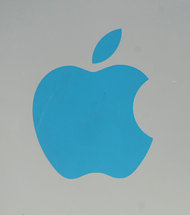But the evidence in the case will not just determine whether Apple has violated antitrust laws. It will also tell a broader story of how the introduction of e-books created upheaval in the publishing industry — with guest appearances by major players like Amazon and Barnes Noble and e-mails from the late Steven P. Jobs, Apple’s former chief executive.
In the case, brought a year ago, the Justice Department accused Apple and five book publishers of conspiring to raise e-book prices. The idea, the government said, was to allow publishers to set their own prices rather than letting retailers do so.
Their motivation, according to the Justice Department, was to defend themselves against Amazon, which was setting the price of most new e-books at $9.99 and becoming increasingly dominant in the market. Simon Schuster, HarperCollins and the Hachette Book Group settled the day that charges were filed; Penguin and Macmillan settled months later.
Complaints by Amazon, which now controls at least 60 percent of the e-book market, are widely believed to have incited the investigation. Amazon declined to comment.
After the lawsuit was filed, the expectation was that e-book prices would drop sharply; the publishers that settled agreed to allow retailers to discount their e-books for two years. But the price drop has still not happened.
A government victory against Apple, which would not involve monetary damages, might also not affect e-book prices.
“Are consumers going to be better off as a result of any government win here?” said Charles E. Elder, an antitrust lawyer at Irell Manella, which is not involved in the case. “That’s going to have to be seen depending on what happens to book publishing generally. It’s in trouble, and e-books are either the savior or they’re going to hasten the demise of book publishers.”
Apple declined to comment, but has said it has done nothing wrong.
“The e-book case to me is bizarre,” Timothy D. Cook, Apple’s chief executive, said during an onstage interview at a business conference last week in Southern California. “We’ve done nothing wrong there, and so we’re taking a very principled position of this. We were asked to sign something that says we did do something, and we’re not going to sign something that says we did something we didn’t do. And so we’re going to fight.”
Apple certainly has the money to fight, and a brand to protect, at a time when its stock is sagging and its tax practices and manufacturing processes are under scrutiny. Yet it is bigger than ever — with hundreds of millions of its iPhones and iPads in the hands of customers all over the globe.
The trial, before Judge Denise L. Cote of United States District Court, is expected to feature testimony from chief executives from the five publishers, who will offer a window into their world of fierce price negotiations. But the star witness may well be Mr. Jobs, even though he died in October 2011.
In the case, the government cast
Apple as the “ringmaster” of the conspiracy. It said that when the company entered the e-book industry in 2010 with the introduction of the iPad, it wanted to pressure Amazon to raise its prices above its uniform $9.99 for new e-books.
At the time, publishers’ agreements to sell e-books were made under the so-called wholesale model of print books; publishers charged retailers about half the cover price for a book, and the retailers then set their own prices. The government said Mr. Jobs had persuaded publishers to agree to agency pricing, which allowed publishers to set their own prices for e-books, giving Apple a 30 percent commission for books sold in its online store.
The publishers’ contracts with Apple included a “most favored nation” clause, requiring that no other retailer sell e-books for a lower price; if they did, the publisher would have to match the price of the e-book in Apple’s store. That, the Justice Department said, resulted in higher prices that harmed consumers.

Article source: http://www.nytimes.com/2013/06/03/technology/e-book-antitrust-case-against-apple-to-begin.html?partner=rss&emc=rss

